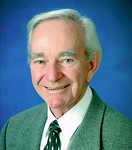

New 2025 5th edition
Developed at Embry Riddle Aeronautical University, this is a most comprehensive textbook available on modern gas turbine engines for the A&P or EASA B1 student who wants a higher focus on turbine powerplants.
With over 570 detailed illustrations, charts, and tables; you will find comprehensive information on each turbine section including theory, operation, and maintenance of each turbine type; turbojet, turbofan, turboprop and turboshaft including APUs as found on a variety of aircraft from helicopters to small jets, to the largest modern airliners.
Its chapters are organized as follows:
For sample pages and the complete table of contents, click the Look Inside link above.
New with this 5th edition
The matching Aircraft Gas Turbine Powerplants Workbook includes a series of carefully prepared study questions matching each chapter. These questions emphasize key elements and enable you to continually check your understanding as you navigate through the material.
For Instructors
Teaching aids from the authors are available for this book including image banks, powerpoint presentations, and classroom videos. Please contact Aircraft Technical Book Company for details.
Peter A. Vosbury’s first exposure to aviation was through his step-father, who was the Director of Personnel for Pan American World Airways. He spent time at the airport, watching airplanes take off and land, and was always asking questions about what made them fly and how all the parts and pieces worked. After graduating from high school Peter attended Embry-Riddle Aeronautical University where he majored in Aviation Maintenance Science and received his FAA certification as an A&P mechanic.
After graduating from Embry-Riddle, he worked in General Aviation at an airport in Saint Petersburg, Florida, before joining the U.S. Navy in 1969. In the Navy he worked as an Aviation Machinist Mate Jet (ADJ), maintaining the powerplants on a squadron of airplanes known as the E-2 Hawkeye. After the Navy Peter went back to school and completed his graduate degree in education at the University of Central Florida. In 1976 he had an opportunity to become a member of the faculty at Embry-Riddle Aeronautical University, where he taught for 45 years before retiring as a Professor Emeritus in 2020.
Peter is the author of 3 books on Aircraft Gas Turbine Powerplants, the author of a book on Aircraft Systems for Professional Pilots, has written chapters for many aviation technical books, has published numerous magazine articles on aviation technical subjects, and wrote the answers and explanations study guide for the FAA written exams.

An interest in aviation began for Charles Otis as a young boy growing up in Rhode Island during World War II, where he would hang out at the airport and learn how to identify all the different aircraft he would see. His official career in aviation began shortly after graduating from high school when he joined the U.S. Air Force and applied to attend the training course on aircraft and engine maintenance. His Air Force career lasted 21 years, during which time he performed maintenance on a wide variety of aircraft types, supervised others performing maintenance, and trained hundreds of airmen on the skills needed to keep aircraft safe and airworthy. It would be entirely accurate to say that Charles not only began his aviation maintenance career in the Air Force, he also began his career as an educator. After 21 years Charles retired with the highest enlisted rank attainable, a Chief Master Sergeant.
Because of the success Charles had teaching other airmen how to maintain aircraft and their engines, and the joy he felt when he saw those airmen perform their jobs correctly and safely, he decided that teaching would remain a part of his future. During his last few years in the Air Force, Charles took courses at a few different universities and earned his baccalaureate degree in education. After retiring he continued to take courses and graduated from the University of Central Florida with a Masters in Education.
Charles Otis was now ready to start his second career in aviation, and he accepted a position as an Assistant Professor at Embry-Riddle Aeronautical University. Because of his years of experience maintaining turbine engines, he was assigned the turbine engines course to teach. He became the course monitor for the turbine engine course and developed it into one of the finest programs in the country. He touched the lives of thousands of students, many of which went on to become highly successful turbine engine technicians. He encouraged his students to continue their education and to become the best technicians they could, but more than that, to become the best person they could. Charles retired from Embry-Riddle after 25 years of teaching, having attained the rank of Full Professor with Tenure and being awarded the status of Professor Emeritus.
While teaching at Embry-Riddle Charles developed an interest in writing, and he discovered that he was very good at it. He wrote the “Aircraft Gas Turbine Powerplants” book to use for his own course, and then to his pleasant surprise discovered that many other schools nationwide and internationally adopted the book for their courses. He then wrote the “Encyclopedia of Jet Aircraft and Engines” and numerous magazine articles for aviation publications.
After retiring from Embry-Riddle Charles was not done giving of his time and many talents. He was an accomplished technical person who could not only fix a turbine engine, he could build furniture, fix leaky plumbing or fix an electrical problem. For many years after retiring, he donated his time at a shelter for homeless families, fixing and repairing anything that was broken.
Charles E. Otis will forever be missed, but he will never be forgotten. His legacy will live on through the wonderful accomplishments of his children, through his former students who remember him so fondly, through the influence of the books he wrote, and through the endowed scholarship in his name that helps aviation maintenance students at Embry-Riddle Aeronautical University.